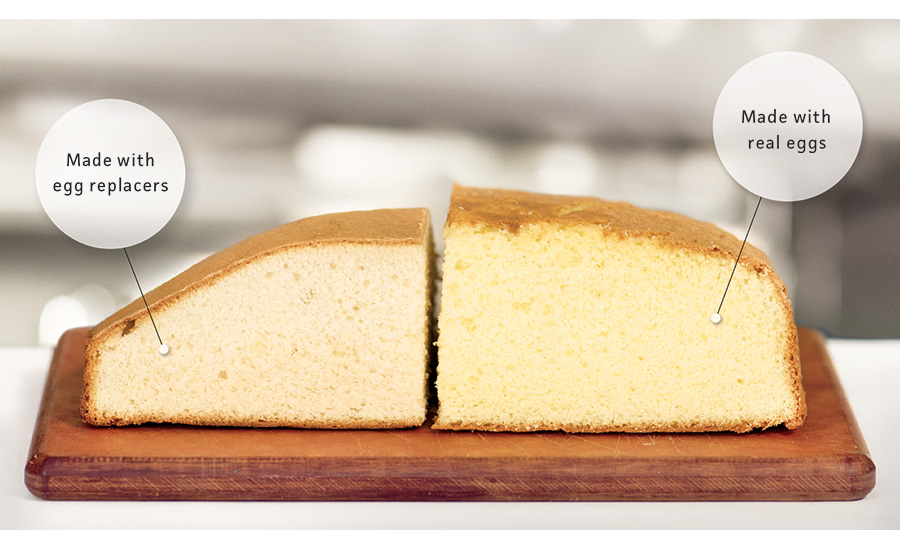The brief egg supply worry of last year led to concerns that food processors might not have sufficient eggs and egg products to carry them through. While the “crunch” turned out to be short, with careful distribution by egg producers keeping processors from taking the hardest hit, the issue of replacement ingredients for eggs landed in the limelight. This invited the comprehensive reexamination of the irreplaceable physical qualities of real eggs in comparison to egg substitutes in certain formulations.
Eight studies have been conducted thus far, on yellow batter cake, sponge cake, cheesecake, blueberry crème cake muffins, sweet dough, sugar cookies, chocolate chip cookies, and brownies. Research protocol strictly followed standard industry practices for objectivity and sound scientific method, especially vis manufacturer directions for recommended usage levels and processes.
The studies, funded by The American Egg Board, were performed in the independent, clean-label product development test kitchens of CuliNex LLC, Seattle, and at the not-for-profit labs of AIB International, Manhattan, Kan.
Formulations were selected based on such parameters as universal availability within the bakery industry. For example, sponge cake was chosen because of the known functional contributions of eggs in formulation, including providing structure and creating a resilient structure suitable for filling, frosting, and packaging. A foam cake in its simplest form, sponge cake relies on flour, sugar, whole eggs, and salt for its base ingredients for a slightly chewy, yet airy, finely grained, evenly textured cake.
Cheesecake relies on eggs for building structure. The proteins within eggs coagulate to support the rich, dense cheese filling and allow it to reach the right balance of richness and tenderness with firmness, while eggs’ emulsifying properties help create expected mouthfeel. Whole eggs in cheesecake formulations also carry flavor via the fat within the yolk, enhancing fat-soluble flavoring ingredients—a quality of particular importance given the often mild and pleasant flavor notes desired in a traditional cheesecake.
Broad generalizations regarding the use and/or success of egg replacers are challenging at best, due to differences among suppliers even among ingredients made from the same source material. However in a subjective sense, overall the replacers used fell short on flavor, according to Emily Munday, culinologist/nutritionist with CuliNex, and one of the principal researchers on the study.
“Eggs react synergistically with the other ingredients to create that ‘sweet baked good flavor,’ that consumers expect,” she explains. “There is a noticeable loss in flavor intensity and likability when eggs are reduced and/or removed from bakery formulations that traditionally contain egg ingredients.”
Each application had a control formulation made with eggs at typical usage levels; a negative control made without eggs or egg replacers; and test formulations made with egg replacers, at the manufacturers’ suggested usage rate. Egg replacer products were selected based on recommendations for each specific application from suppliers. The replacers varied in content from soy protein, whey protein concentrate, wheat protein, and algae-based replacers, to various ingredient blends.
The research team followed preparation of samples with extensive analyses of the products, measuring and comparing across such parameters as: batter specific gravity, batter viscosity, baked good crust and crumb color, product height, and other critical points. Sensory panelists also analyzed each product on organoleptic attributes, such as aroma, color, texture, mouthfeel, flavor and overall likability.
Get more study details and download research application summaries @RealEggs.org.
Mark Crowell, CRC, is founder of CuliNex LLC, Seattle, a custom product development firm. Visit www.culinex.biz for more details.
Originally appeared in the July, 2016 issue of Prepared Foods as Research Supports Egg Advantage.



